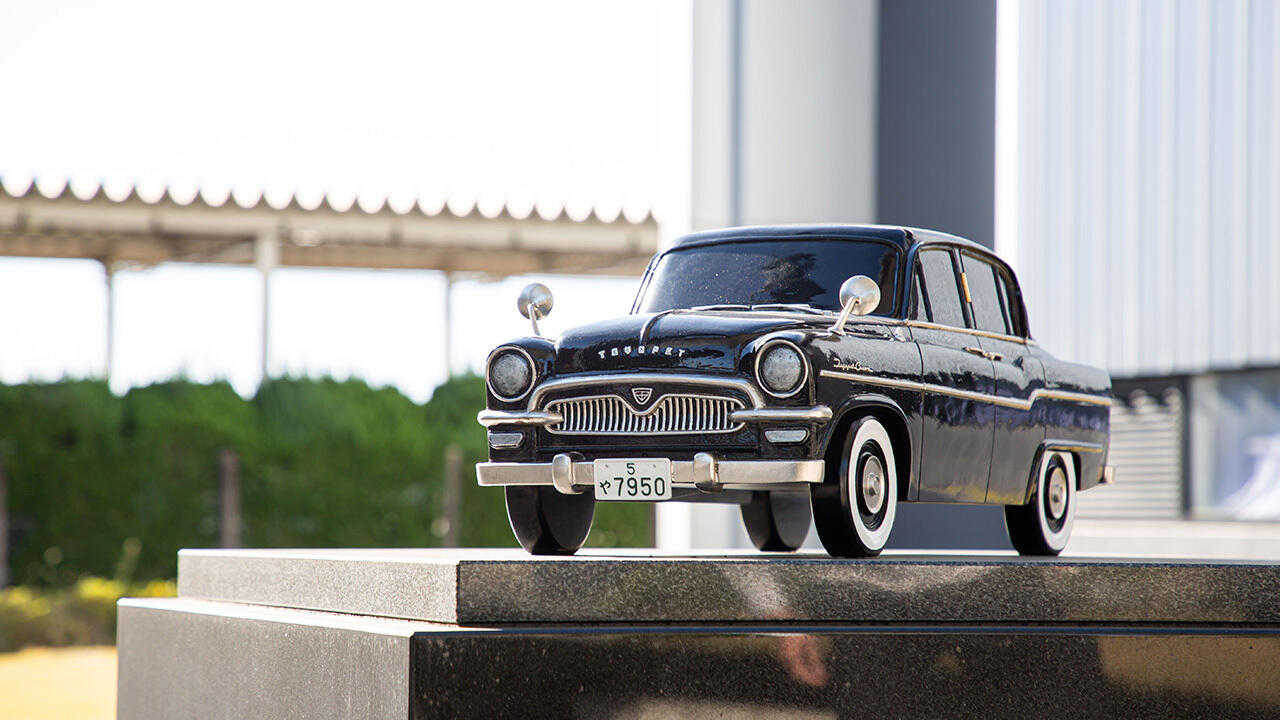
In the five years since 2020, Toyota's Motomachi Plant has launched 15 different car models. We unravel the plant's history to see how its unique spirit and skills have been passed down to this day.
Connected to the community
Situated just 500 meters from the plant’s main gate is the Fukadayama Shrine. Honoring the area’s guardian deity, this popular shrine was relocated from the grounds of the Motomachi Plant some 60 years ago.
Given this history and the plant’s close ties to the community, the shrine’s ceiling features paintings of past generations of Crown amid local scenery from the Fukadayama area and Toyota City.
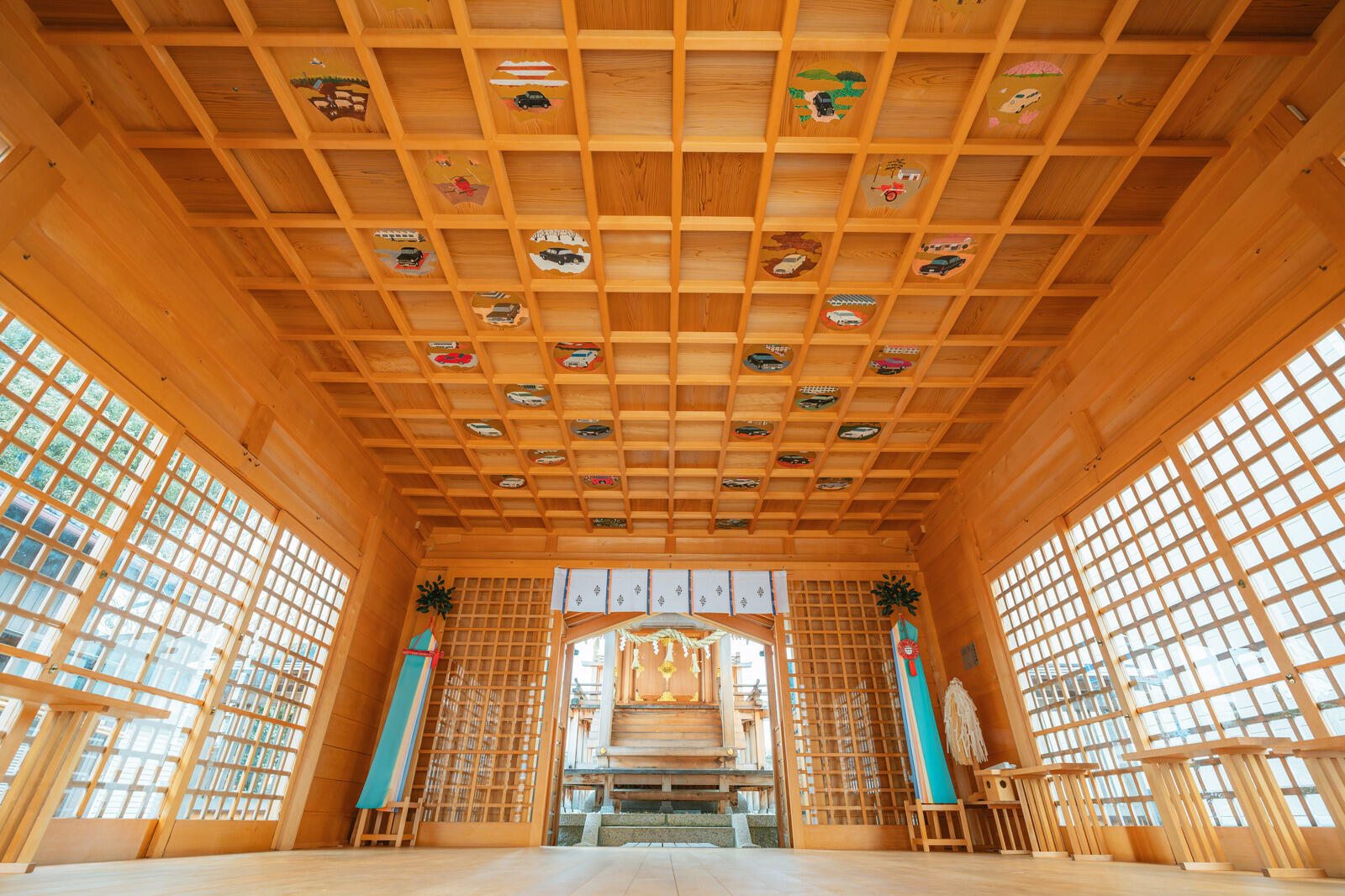
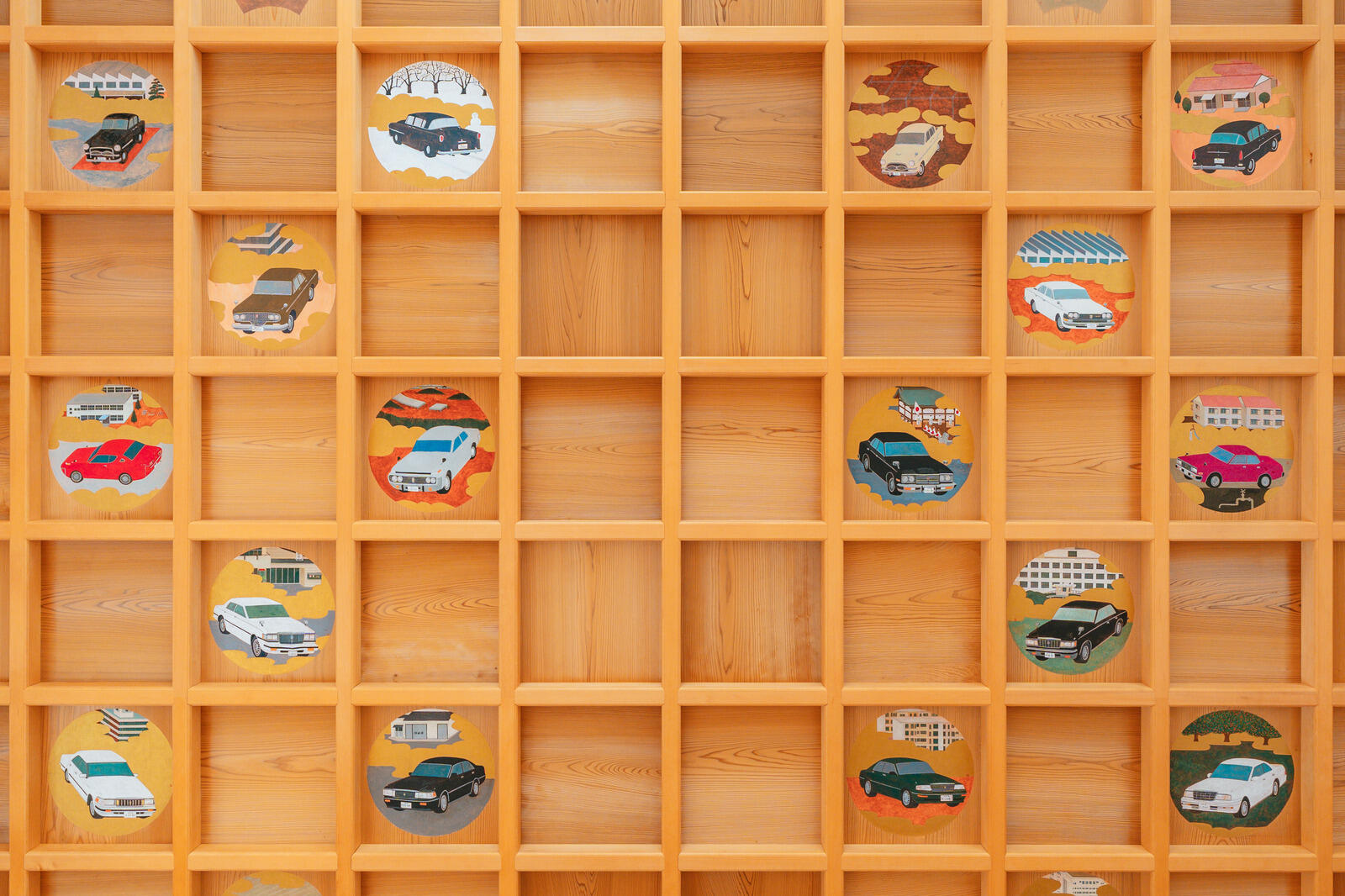
Ishihashi, the deputy general manager who has shared much of Motomachi’s history, wants to make the plant a warm, welcoming place that always remembers its community roots.
Deputy Plant General Manager Ishihashi
One time, when I was around preschool age, my older brother had a fever, and our mother carried him to Toyota Hospital (now Toyota Memorial Hospital).
As I was being led along by the hand, a company bus carrying employees to the plant spotted us and stopped nearby. They gave us a ride up the road to the hospital.
Even as a child, Toyota struck me as kind and warm. I want the Motomachi Plant to have that sort of warmth.
To remain a “best-in-town” plant beloved and trusted by the community, Motomachi is currently undertaking various efforts that contribute to the local area. With representatives in every department, this initiative includes activities such as painting park facilities and cleaning shrines.
Contributions to the community also go beyond volunteer activities. For example, the New Business Planning Division has developed and launched the production of woodchips for use in paving, as part of efforts to help owners of mountainous land manage the forest life cycle.
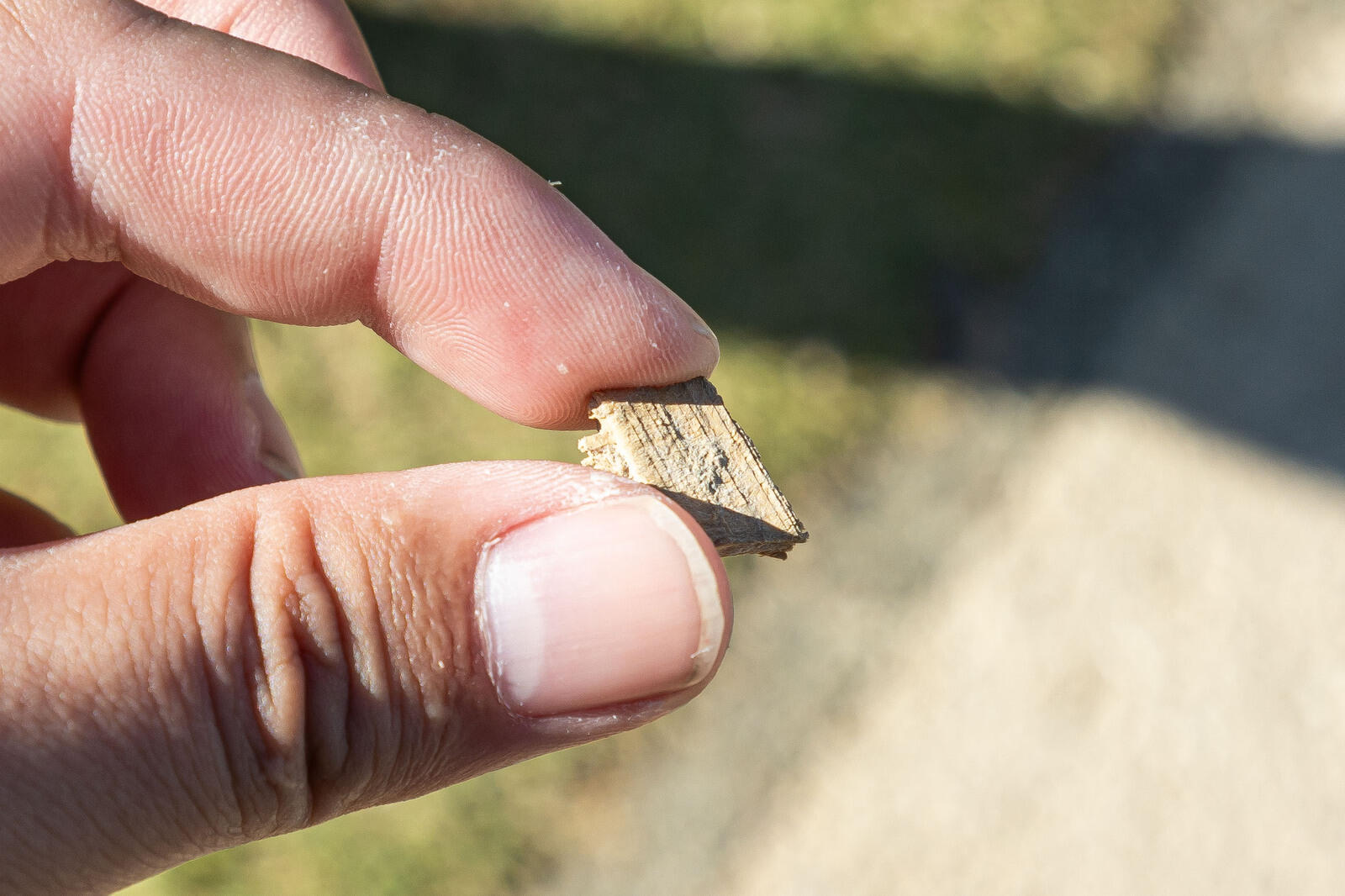
If forest trees are not cut down at the right time, the amount of CO2 they absorb decreases. Recently, however, low wood prices have resulted in owners leaving trees to grow rather than cutting them.
To help solve the problem, Toyota has teamed up with an association which promotes using woodchips from forest thinning to pave paths. Trees from Toyota City are turned into woodchips for local projects, and the initiative is being promoted more widely.
As part of expanding to the local community, Toyota is also testing the idea within the Motomachi Plant. Since woodchips retain moisture and are effective in combating heat, they have been used on paths that receive the most sunlight and high pedestrian traffic during the day.
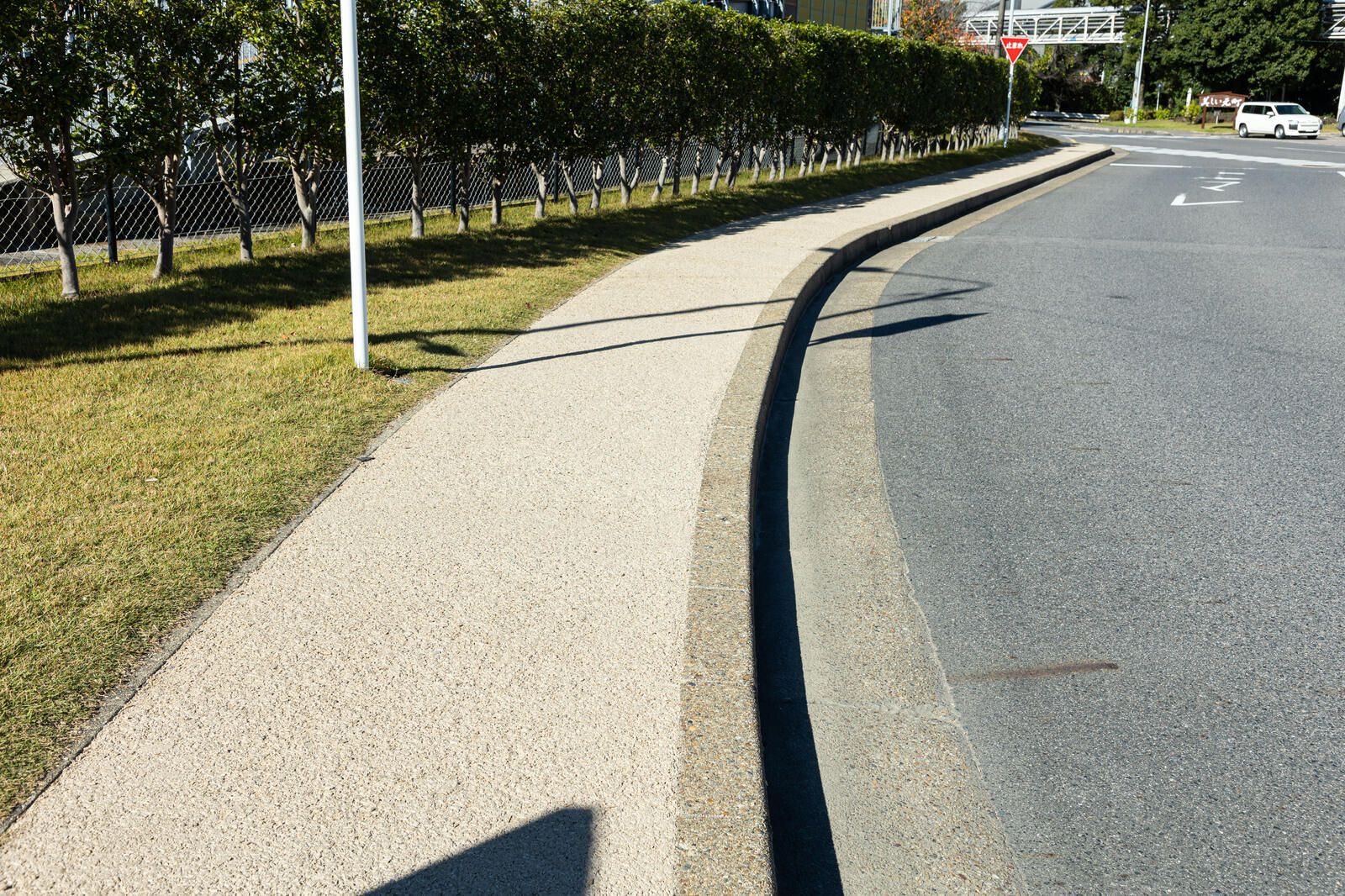
Since woodchip paths prevent the growth of weeds, they are also being used in areas where this is a problem, including parks in Aichi Prefecture and station squares in Toyohashi City.
As Motomachi strives to be a warm, welcoming plant rooted in the community, what kind of future does Ishihashi envision?
Deputy Plant General Manager Ishihashi
A place where diverse people recognize and appreciate each other’s efforts. I want what we make here to contribute to the world and help produce happiness for all.
Not simply a place where things are made, but one where people come together—not only those of us who work here but the entire community.
Let’s call it the “Motomachi Village.” That’s the kind of place I want to create.
“I would also like to make a Motomachi Gelato. That will keep me busy in retirement,” adds Ishihashi with a laugh.
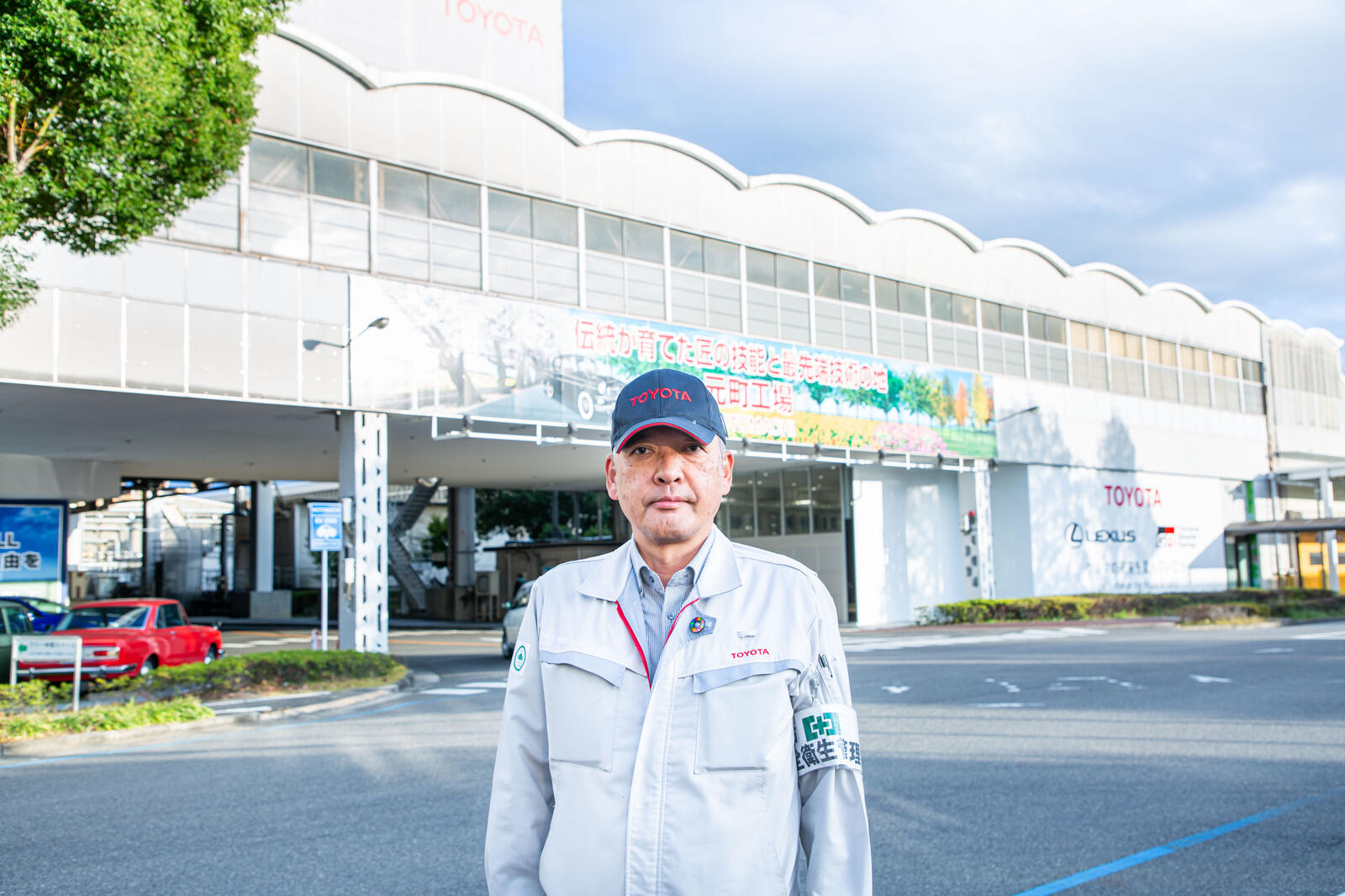
Throughout its history, the Motomachi Plant has continued to take on new challenges. With the spirit and skills inherited from past generations, Ishihashi and his team keep forging ahead in these rapidly changing times. Find out more in our next article, highlighting Motomachi’s evolution.

